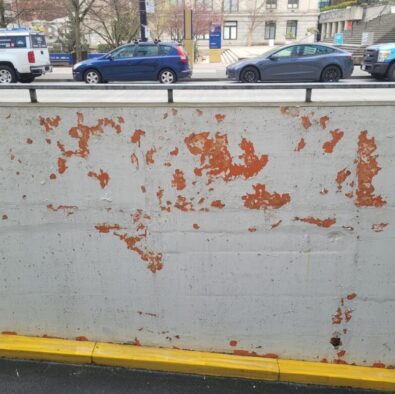Paint failures can be frustrating and expensive to fix, especially if they happen shortly after a new paint job. Fortunately, there are several steps you can take to prevent paint failures and ensure a long-lasting, attractive finish. In this article, we’ll explore some common causes of paint failures and offer tips for preventing them.
- Surface Preparation: Proper surface preparation is the first step in preventing paint failures. Each type of substrate (i.e., concrete, steel, wood) requires a different type of surface preparation. All surfaces should be cleaned of dirt, grease, oil, and loose paint before applying new paint. This can be accomplished by power washing, sanding, blasting, or using a chemical cleaner. In addition, surfaces should be allowed to dry completely before applying new paint. If the surface is damp or moist, the paint will not adhere properly and fail.
- Primer: Applying a primer before painting can help ensure proper adhesion and prevent paint failures. Primers also help to seal porous surfaces, prevent stains from showing through, and provide a uniform surface for the topcoat. Make sure to choose a primer that is compatible with both the surface being painted and the type of paint being used.
- Paint selection: Using high-performance paint is a must to prevent sooner-than-expected paint failures. High-performance paint is more durable and resistant to water, moisture, fading, and typical paint failures such as flaking and peeling.
- Application Technique: Proper application technique is critical in preventing paint failures. The paint should be applied evenly and at the recommended thickness. Always follow the manufacturer’s recommendations for mixing and application.
- Environmental Factors: the environment surrounding the paint can also contribute to unexpected paint failures. Rain, humidity, temperature fluctuations, and sun exposure can all cause unexpected paint failures. Painting during the recommended temperature and humidity ranges is a must to prevent paint failures due to environmental factors.
- Maintenance: proactive maintenance can help prevent paint failures and expensive repairs. Regular cleaning and inspection of painted surfaces can help identify and address potential issues before they become bigger problems.
In conclusion, preventing paint failures requires proper surface preparation, using high-performance paint, applying the paint correctly, considering environmental factors, and proper maintenance. By following these tips, you can help ensure a long-lasting and attractive paint finish.

